#infanta isabel clara eugenia
Text
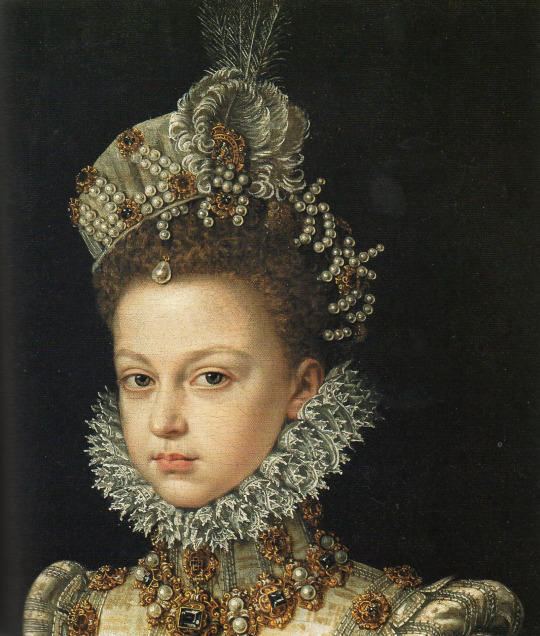
Alonso Sánchez Coello (Spanish, 1531-1588)
The Infanta Isabel Clara Eugenia, Detail, 1579
Isabella (1566-1633) was the daughter of Philip II of Spain by his third wife, Elisabeth of Valois. Isabella was around the age of thirteen at the time this was painted. In 1599 she married Albrecht of Austria and took over the regency of the Habsburg Netherlands on behalf of her father. Philip was close to both of his daughters, in particular to Isabella who was not married off young unlike the traditional custom with princesses.
#different quality and colour#art#spanish art#european art#art history#world history#european history#hispanic#classical art#spanish princess#infanta isabel clara eugenia#1500s#fine art#fine arts#europe#european#oil painting#europa#mediterranean#netherlands#spanish netherlands#classic art#female portrait#female#portrait#painting#woman#portrait of a girl#royal#royalty
290 notes
·
View notes
Text


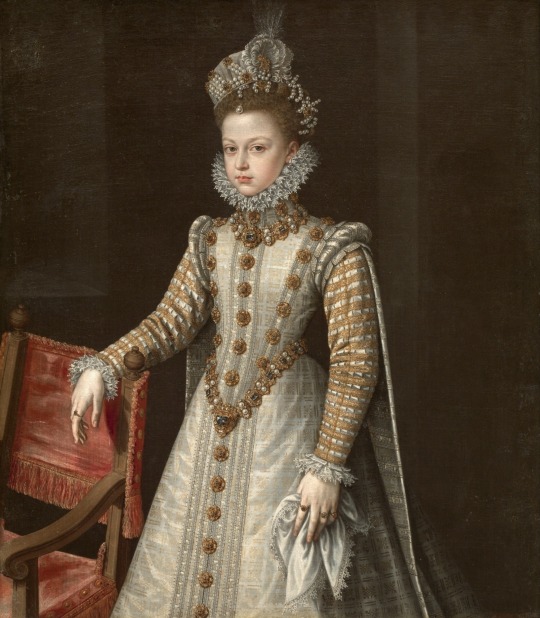

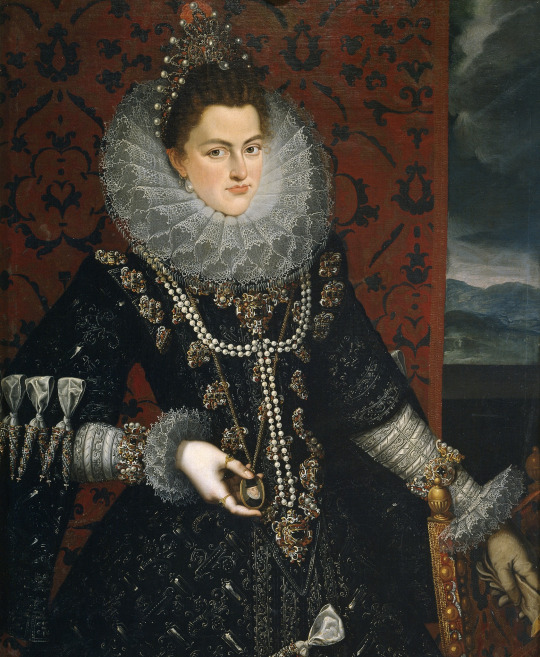

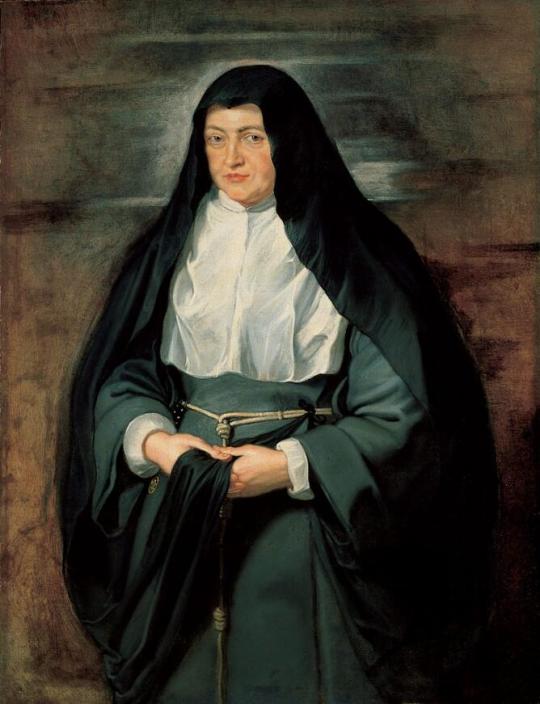

The Infanta Isabella Clara Eugenia (Spanish, 1566-1633): Sovereign of the Netherlands, Duchess of Lothier, Brabant, Limburg, Luxemburg, and Guelders, Margravine of Namur, Countess Palatine of Burgundy, Countess of Flanders, Artois and Hainaut. [source]
1. Attributed to Alonso Sánchez Coello (1531-1588) and Workshop, Isabella Clara Eugenia and Catharina, Daughters of Philip II, King of Spain, c. 1569-70, oil on canvas; The Royal Collection Trust, Green Drawing Room, Buckingham Palace.
2. Alonso Sánchez Coello (Spanish,1531-1588), The Infantas Isabel Clara Eugenia and Catalina Micaela, circa 1575, oil on canvas, Museo del Prado, Madrid.
3. Alonso Sánchez Coello (Spanish, 1531-1588), Infanta Isabella Clara Eugenia, 1577, oil on canvas, Museo del Prado, Madrid.
4. Alonso Sánchez Coello, The Infanta Isabella Clara Eugenia and Magdalena Ruiz, 1586, oil on canvas, Museo Nacional del Prado, Madrid.
5. Juan Pantoja de la Cruz (Spanish, 1553-1608), The Infanta Isabel Clara Eugenia, 1598-99, oil on canvas, Museo del Prado, Madrid.
6. Frans Pourbus the Younger (Flemish, 1569-1622), The Infanta Isabella Clara Eugenia, Archduchess of Austria, c. 1598-1600, oil on canvas.
7. Peter Paul Rubens and Workshop (Flemish, 1577-1640), Portrait of Archduchess Isabella Clara Eugenia, Spanish Regent of the Low Countries, as a Nun, 1625, oil on canvas.
8. Anthony van Dyck (Flemish, 1599-1641), The Infanta Isabella Clara Eugenia, c. 1630, oil on canvas, Walker Art Gallery.
Infanta Isabella Clara Eugenia (Spanish, Segovia, 1566 - 1633, Brussels) was the daughter of Philip II of Spain and his third wife, Elizabeth of Valois, who died after a miscarriage when the Infanta was only two. Her sister Catalina Micaela was one year younger.
She became the sovereign of the Spanish Netherlands in the Low Countries and the north of modern France with her husband, Archduke Albert VII of Austria. She was one of the most powerful women in Europe at the time. The couple had no children. She joined the Sisters of St. Clare order after her co-regent's death.
#infanta isabel clara eugenia#spanish royalty#powerful women#alonso sánchez coello#juan pantoja de la cruz#frans pourbus the younger#peter paul rubens#anthony van dyck#16th century#17th century#european history
34 notes
·
View notes
Text


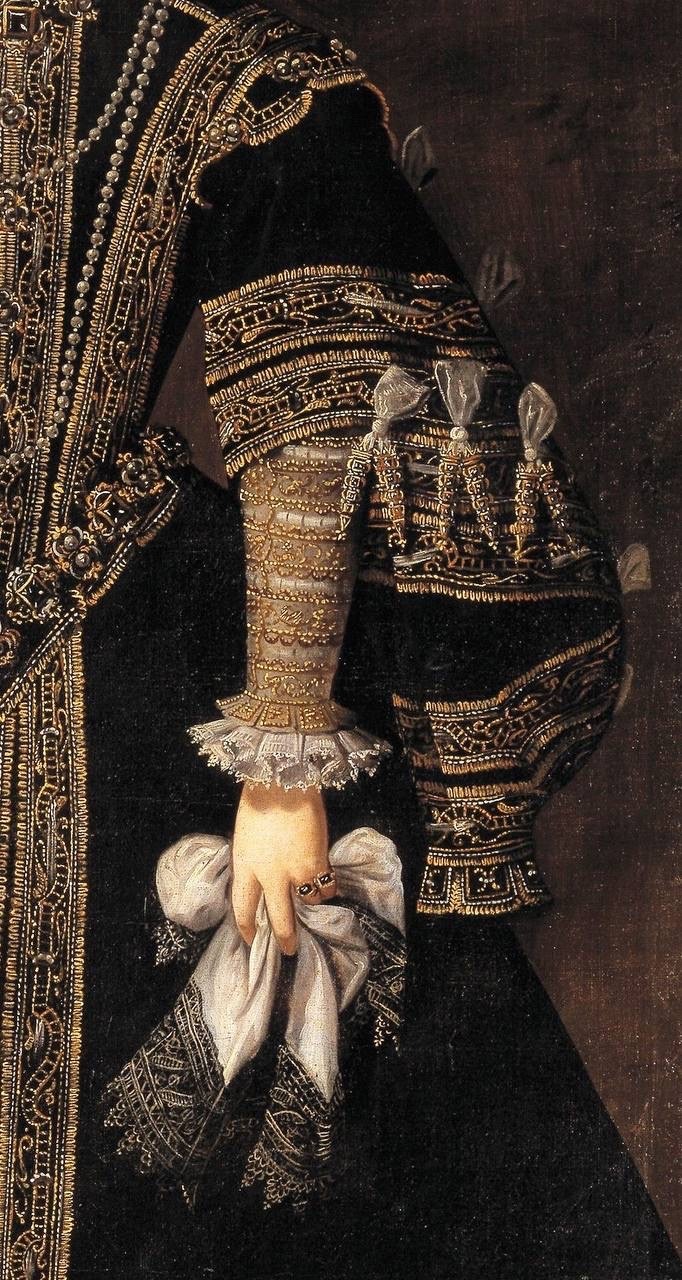
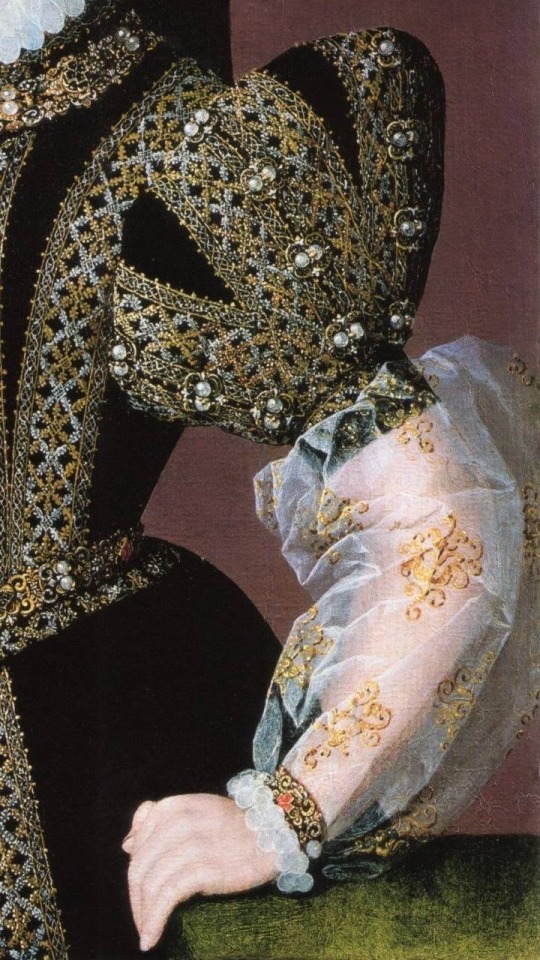
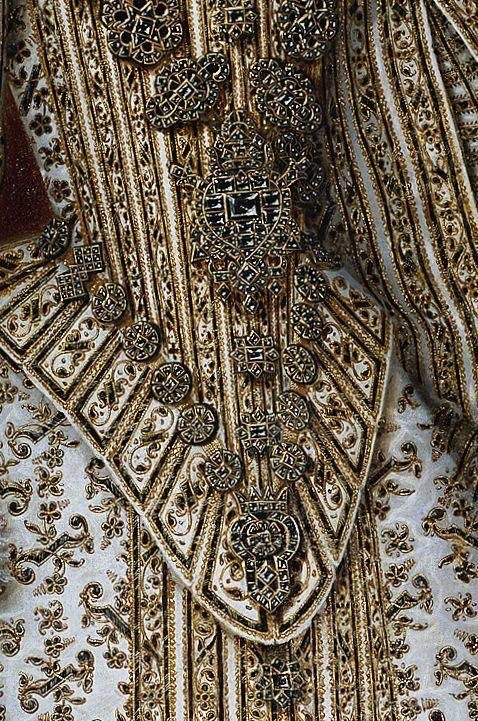


#margaret of austria#Elizabeth of France#Anna of Austria#Queen of Spain by Alonso Sanchez Coello#Isabelle- Elizabeth of France#Infanta Isabella Clara Eugenia of Spain#1600s art#drawing#Ana de Velasco y Giron by Juan Pantoja de la Cruz 1603#Juan Pantoja de la Cruz
3 notes
·
View notes
Text

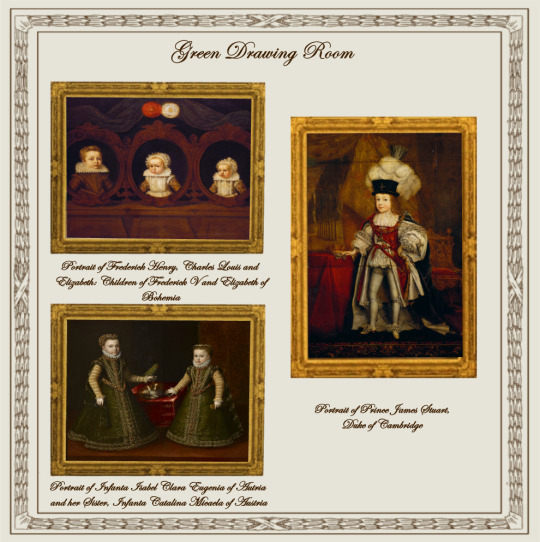
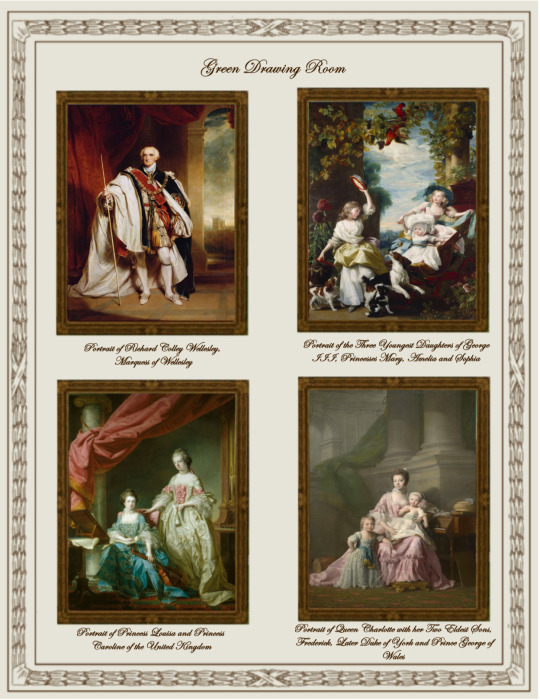
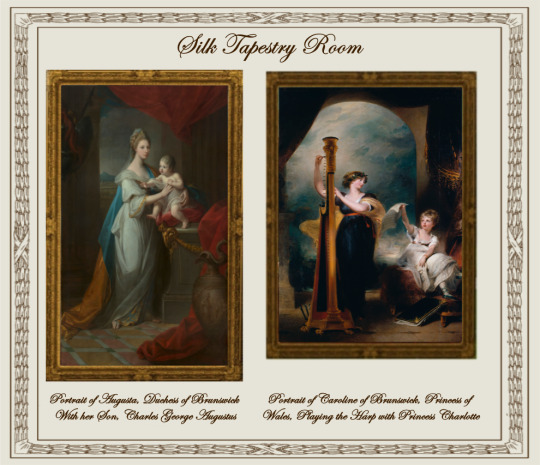
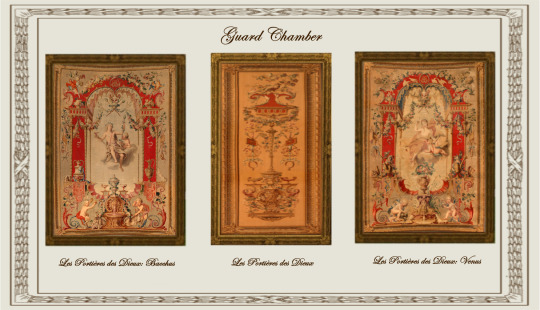

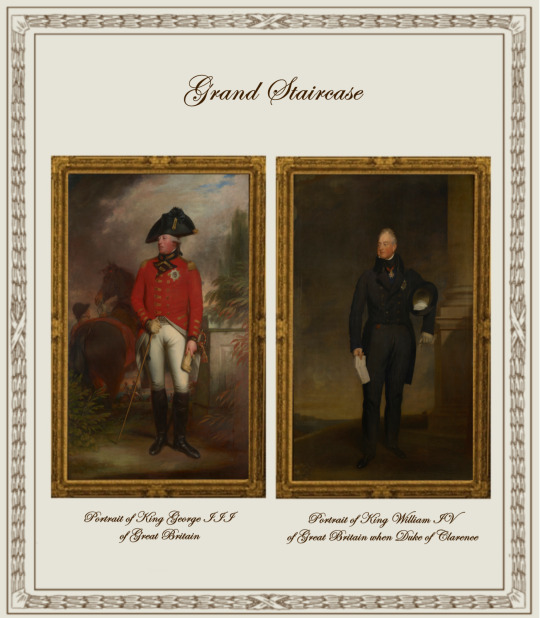
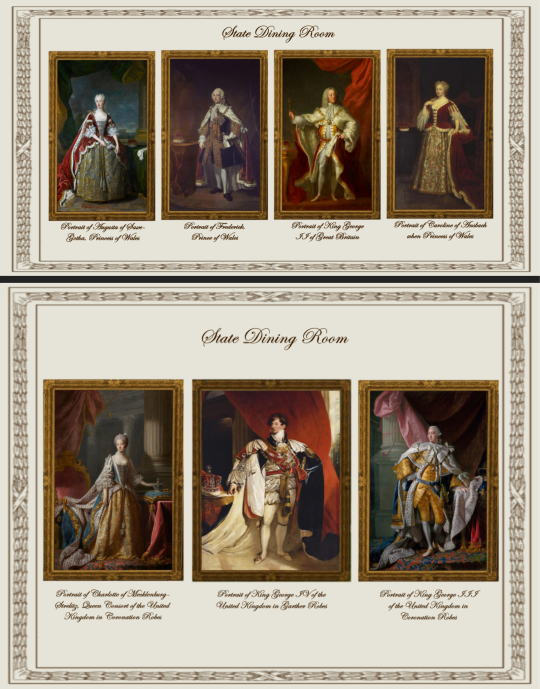
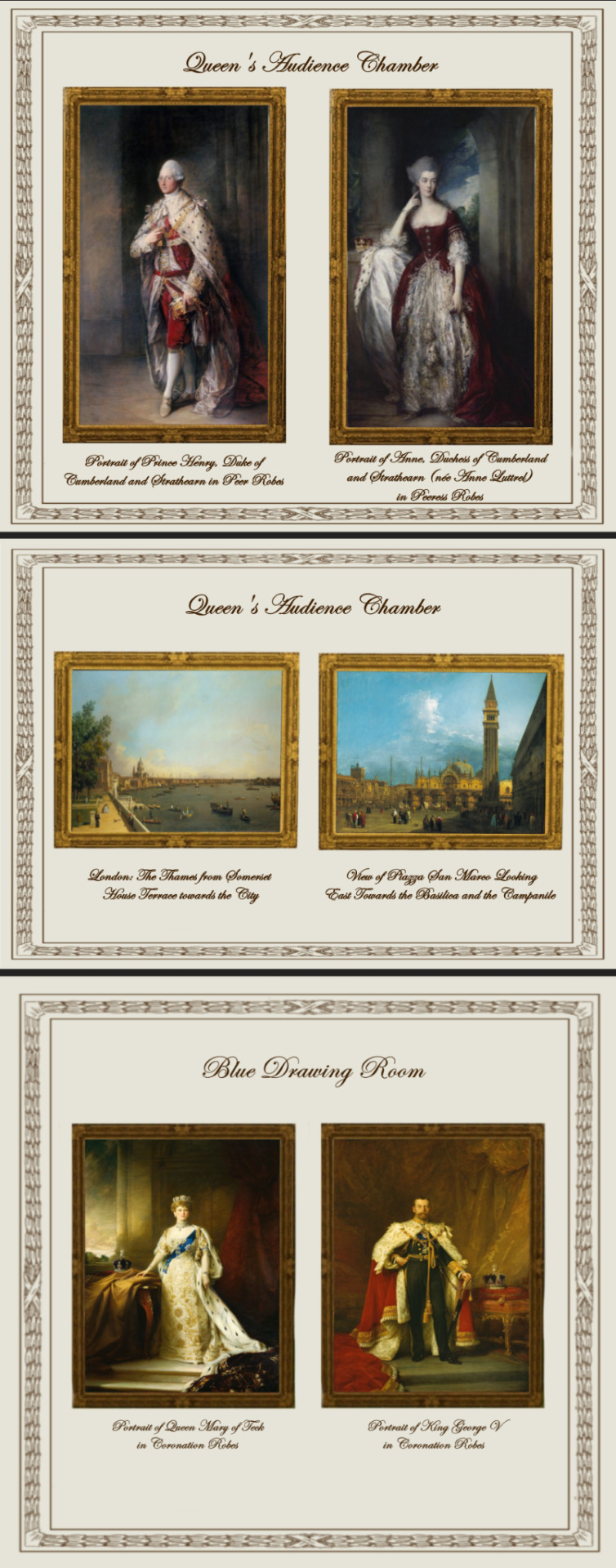
Paintings from Buckingham Palace: part I
A retexture by La Comtesse Zouboff — Original Mesh by @thejim07
100 followers gift!
First of all, I would like to thank you all for this amazing year! It's been a pleasure meeting you all and I'm beyond thankful for your support.
Spread among 13 occupied and historic royal residences in the United Kingdom, the collection is owned by King Charles III and overseen by the Royal Collection Trust. The British monarch owns some of the collection in right of the Crown and some as a private individual. It is made up of over one million objects, including 7,000 paintings, over 150,000 works on paper, this including 30,000 watercolours and drawings, and about 450,000 photographs, as well as around 700,000 works of art, including tapestries, furniture, ceramics, textiles, carriages, weapons, armour, jewellery, clocks, musical instruments, tableware, plants, manuscripts, books, and sculptures.
Some of the buildings which house the collection, such as Hampton Court Palace, are open to the public and not lived in by the Royal Family, whilst others, such as Windsor Castle, Kensington Palace and the most remarkable of them, Buckingham Palace are both residences and open to the public.
About 3,000 objects are on loan to museums throughout the world, and many others are lent on a temporary basis to exhibitions.
-------------------------------------------------------
This first part includes the paintings displayed in the White Drawing Room, the Green Drawing Room, the Silk Tapestry Room, the Guard Chamber, the Grand Staircase, the State Dining Room, the Queen's Audience Room and the Blue Drawing Room,
This set contains 37 paintings and tapestries with the original frame swatches, fully recolourable. They are:
White Drawing Room (WDR):
Portrait of François Salignan de la Mothe-Fénelon, Archbishop of Cambrai (Joseph Vivien)
Portrait of a Lady (Sir Peter Lely)
Portrait of a Man in Armour with a red scarf (Anthony van Dyck)
Portrait of Alexandra of Denmark, Queen Consort of the United Kingdom and Empress of India (François Flameng)
Green Drawing Room (GDR):
Portrait of Prince James Stuart, Duke of Cambridge (John Michael Wright)
Portrait of Frederick Henry, Charles Louis and Elizabeth: Children of Frederick V and Elizabeth of Bohemia (unknown)
Portrait of Infanta Isabel Clara Eugenia of Autria and her Sister, Infanta Catalina Micaela of Austria (Alonso Sanchez Coello)
Portrait of Princess Louisa and Princess Caroline of the United Kingdom (Francis Cotes)
Portrait of Queen Charlotte with her Two Eldest Sons, Frederick, Later Duke of York and Prince George of Wales (Allan Ramsay)
Portrait of Richard Colley Wellesley, Marquess of Wellesley (Martin Archer Shee)
Portrait of the Three Youngest Daughters of George III, Princesses Mary, Amelia and Sophia (John Singleton Copley)
Silk Tapestry Room (STR):
Portrait of Caroline of Brunswick, Princess of Wales, Playing the Harp with Princess Charlotte (Sir Thomas Lawrence)
Portrait of Augusta, Duchess of Brunswick With her Son, Charles George Augustus (Angelica Kauffmann)
Guard Chamber (GC):
Les Portières des Dieux: Bacchus (Manufacture Royale des Gobelins)
Les Portières des Dieux: Venus (Manufacture Royale des Gobelins)
Les Portières des Dieux (Manufacture Royale des Gobelins)
Grand Staircarse (GS):
Portrait of Adelaide of Saxe-Meiningen, Queen Consort of Great Britain (Martin Archer Shee)
Portrait of Augustus, Duke of Sussex (Sir David Wilkie)
Portrait of Edward, Duke of Kent (George Dawe)
Portrait of King George III of Great Britain (Sir William Beechey)
Portrait of King William IV of Great Britain when Duke of Clarence (Sir Thomas Lawrence)
Portrait of Leopold I, King of the Belgians (William Corden the Younger)
Portrait of Prince George of Cumberland, Later King George V of Hanover When a Boy (Sir Thomas Lawrence)
Portrait of Princess Charlotte Augusta of Wales (George Dawe)
Portrait of Queen Charlotte at Frogmore House (Sir William Beechey)
Portrait of Victoria of Saxe-Coburg-Saafeld, Duchess of Kent (Sir George Hayter)
State Dining Room (SDR):
Portrait of Charlotte of Mecklenburg-Strelitz, Queen Consort of the United Kingdom in Coronation Robes (Allan Ramsay)
Portrait of King George III of the United Kingdom in Coronation Robes (Allan Ramsay)
Portrait of Augusta of Saxe-Gotha, Princess of Wales (Jean-Baptiste Van Loo)
Portrait of Caroline of Ansbach when Princess of Wales (Sir Godfrey Kneller)
Portrait of Frederick, Princes of Wales (Jean-Baptiste Van Loo)
Portrait of King George II of Great Britain (John Shackleton)
Portrait of King George IV of the United Kingdom in Garther Robes (Sir Thomas Lawrence)
Queen's Audience Room (QAR):
Portrait of Anne, Duchess of Cumberland and Strathearn (née Anne Luttrel) in Peeress Robes (Sir Thomas Gainsborough)
Portrait of Prince Henry, Duke of Cumberland and Strathearn in Peer Robes (Sir Thomas Gainsborough)
London: The Thames from Somerset House Terrace towards the City (Giovanni Antonio Canal "Canaletto")
View of Piazza San Marco Looking East Towards the Basilica and the Campanile (Giovanni Antonio Canal "Canaletto")
Blue Drawing Room (BDR)
Portrait of King George V in Coronation Robes (Sir Samuel Luke Fildes)
Portrait of Queen Mary of Teck in Coronation Robes (Sir William Samuel Henry Llewellyn)
-------------------------------------------------------
Found under decor > paintings for:
500§ (WDR: 1,2 & 3)
1850§ (GDR: 1)
1960§ (GDR: 2 & 3 |QAR 3 & 4)
3040§ (STR, 1 |GC: 1 & 2|SDR: 1 & 2)
3050§ (GC:1 |GS: all 10|WDR: 4 |SDR: 3,4,5 & 6)
3560§ (QAR: 1 & 2|STR: 2)
3900§ (SDR: 7| BDR: 1 & 2|GDR: 4,5,6 & 7)
Retextured from:
"Saint Mary Magdalene" (WDR: 1,2 & 3) found here .
"The virgin of the Rosary" (GDR: 1) found here .
"The Four Cardinal Virtues" (GDR: 2&3|QAR 3 & 4) found here.
"Mariana of Austria in Prayer" (STR, 1, GC: 1 & 2|SDR: 1 & 2) found here.
"Portrait of Philip IV with a lion at his feet" (GC:1 |GS: all 10|WDR: 4 |SDR: 3,4,5 & 6) found here
"Length Portrait of Mrs.D" (QAR: 1 & 2|STR: 2) found here
"Portrait of Maria Theresa of Austria and her Son, le Grand Dauphin" (SDR: 7| BDR: 1 & 2|GDR: 4,5,6 & 7) found here
(you can just search for "Buckingham Palace" using the catalog search mod to find the entire set much easier!)
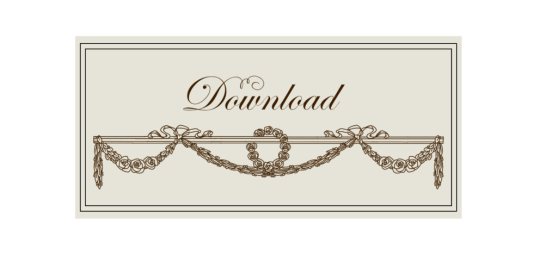
Drive
(Sims3pack | Package)
(Useful tags below)
@joojconverts @ts3history @ts3historicalccfinds @deniisu-sims @katsujiiccfinds @gifappels-stuff
-------------------------------------------------------
#the sims 3#ts3#s3cc#sims 3#sims 3 cc#sims 3 download#sims 3 decor#edwardian#rococo#baroque#renaissance#buckingham#buckingham palace#royal collection trust#wall decor
95 notes
·
View notes
Text


The two beautiful and intelligent daughters of Elisabeth of Valois were very loved by their father, the King of Spain. He called them "the light of my eyes"
Isabel Clara Eugenia and Catalina Micaela are my daughters, and they are so dear to me - in both soul and perfection - that I would give my life and my kingdoms for them if the circumstances would demand so. - Felipe II of Spain

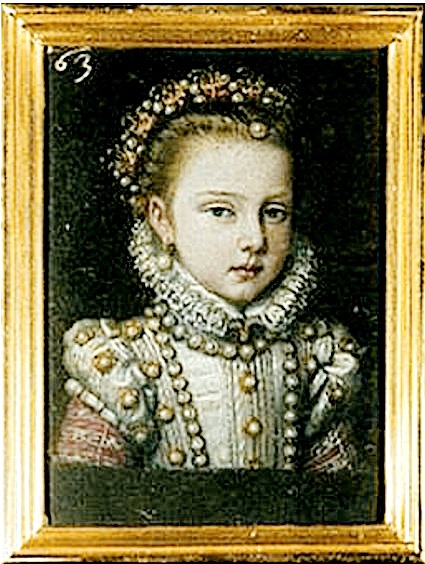
Las dos Infantas que en el ancho suelo
con sus rayos clarísimos deslumbran
como dos nortes en que estriba el cielo,
como dos soles que la tierra alumbran.
Son las que a fuerza de su inmenso vuelo
al soberano nombre de Austria encumbran,
bella Isabel y Catalina bella,
ésta sin par y sin igual aquélla.
Gálvez de Montalvo, 1586
32 notes
·
View notes
Text
Alonso Coello, The Infanta Isabel Clara Eugenia with Magdalena Ruiz, XVI ct

2 notes
·
View notes
Text


Taller de Rubens - La infanta Isabel Clara Eugenia y el archiduque Alberto, soberanos de los Países Bajos españoles
2 notes
·
View notes
Text
THE MEETING OF ABRAHAM AND MELCHIZEDEK
Sir Peter Paul Rubens
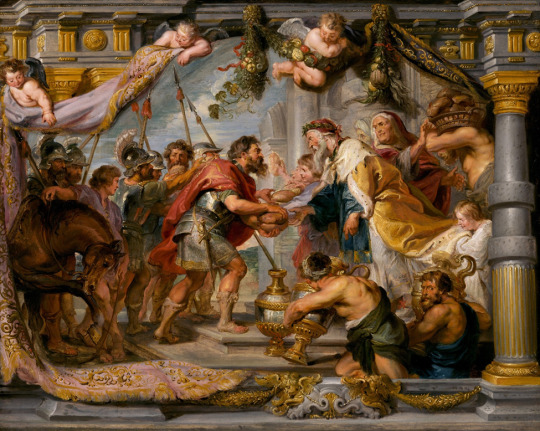
Around 1625, Peter Paul Rubens received an important commission from the Infanta Isabel Clara Eugenia, Governess of the Southern Netherlands (1566–1633) to design a tapestry series of The Triumph of the Eucharist for the royal convent of the Poor Clare’s in Madrid. The tapestries were to be hung during the feast days of Good Friday and Corpus Christi, which celebrate Christ’s presence in the Eucharist. The subject had profound meaning for the Poor Clare’s, who were particularly devoted to the Eucharist—the bread and wine of the Mass that Catholics believe miraculously transubstantiates into the body and blood of Christ when consecrated by a priest. Rubens focused on Old Testament prefiguration’s of the Eucharist and allegorical subjects symbolizing triumph of the Catholic Church over the forces of evil and heresy.
The Meeting of Abraham and Melchizedek is a highly finished morello, or sketch, for one of the Old Testament prefiguration’s of the Eucharist. This story from Genesis tells of the gifts of bread and wine that Abraham received from the Priest-King of Salem, Melchizedek, after returning from a victorious battle (Gen. 14: 17-20). Catholic theologians viewed Melchizedek’s offering of bread and wine as a prefiguration of the Last Supper, and even saw Melchizedek, whose name means “king of Justice,” as a prefiguration of Christ. In Rubens’s vivid portrayal, the scene unfolds on an illusionistically painted tapestry held aloft by putti before an architectural framework. Abraham, in armor standing at the head of his band of soldiers, appears in the center, gratefully receiving loaves of bread from Melchizedek. As the two men lean toward one another, they lock eyes as though they have a premonition, unshared by the others, that the bread and wine have significance beyond bodily sustenance.
Rubens reinforced the momentousness of the encounter not only through compositional devices, but also through his exuberant style. His vivid colors, rich textures, and expressive brush imbue the scene with a feeling of grandeur. In this way Rubens both signals the importance of the prefigured Eucharist in the Old Testament and suggests its continued centrality to the Catholic Faith in his own time.
Society Composition and Dimensions:
The picture is an oil on panel from 1626.
Its overall dimensions are around 65.5 x 82.4 cm (25 13/16 x 32 7/16 inches), and when framed, it measures about 96.8 x 113.4 cm (38 1/8 x 44 5/8 inches).
The image depicts a scenario from Genesis 14:17-20.
Abraham, the biblical patriarch, has emerged triumphant from the battlefield.
He meets Melchizedek, the Priest-King of Salem, who offers him bread and drink.
According to Catholic theology, Melchizedek's contribution foreshadowed the Last Supper and even linked him to Christ.
The painting takes place before an illusionistic ally designed tapestry held aloft by putti (cherubic figures).
Abraham, clothed in armor, stands at the head of his warriors, centered.
He joyfully accepts loaves of bread from Melchizedek, who stands opposite him.
Their gazes meet, implying that the bread and wine are more than just food.
The architectural structure offers depth and context. Rubens uses a vibrant color pallet to convey grandeur and importance.
The rich textures and expressive brushwork add to the scene's vitality.
The warm tones emphasize the spiritual link between the figures. The composition is well-balanced, with Abraham and Melchizedek creating a prominent axis.
The tapestry, carried by putti, conveys a feeling of height and movement.
Architectural components ensure stability and symmetry.
Rubens accomplishes unity by arranging individuals and objects in a harmonic pattern.
Emphasis and Variety:
The interchange of bread and wine represents the Eucharist.
The focus is directed to Abraham's thankful look and Melchizedek's royal gesture.
Textures, hues, and emotions vary, which adds to visual interest.
In conclusion, The Meeting of Abraham and Melchizedek expertly depicts a watershed period in biblical history, combining religious symbolism with Rubens' vibrant style.
How does the work make you feel?
The paint impact me because it refers of a Bible passage that I have read these verses in Genesis when Abraham met Melchizedek who is considered a prefiguration of Jesus in the last supper, and Abraham was blessed by Melchizedek (Priest king of Salem) who is considered a pre-configuration of Jesus.
How or why does it evoke these feelings?
Because I am Christhian, and this is one of my favorite’s chapters in the Bible.
What movement is the artwork associated with?
Is associated with the traditions of the Italian renaissance to produce a powerful style. It was commission by Infanta Isabel Clara Eugenia Governess of the Southern Netherlands (1566–1633).
This is not a portrait; the author tries to make this paint look like a tapestry.
What does the artwork say about the artist that made it?
The author was a profound Christian Catholic who was devoted to paint this kind of themes.
Can you tell what the artist was trying to say?
The artist was trying to describe the passage of Melchizedek and Abraham in the book of Genesis.
How clearly does the artist get their message across?
It is very graphic and clear showing the soldiers, (according to the Passage Abraham just came back from the Battlefield), bread, wine that are described in this Bible passage.

I pick this paint because I think is very important to know that everything in this art it is so real for me in my Christian life, and also that is part of the Bible that is the book that guide my Christian faith, the meeting of Melchizedek and Abraham it is fundamental for us, Christians, Abraham is well known as “The father of the faith” and this is one of the acts that prove it.
0 notes
Text

Title: The meeting of Abraham and Melchizedek
Artist: Peter Paul Rubens
Date: 1625
Media: Oil on canvas
Dimensions: 204 cm x 250 cm
Peter Paul Rubens was a very successful artist in the 17th century. He received an important commission from the infanta Isabel clara Eugenia, governess of southern Netherlands to design a tapestry series of The Triumph of the Eucharist for the royal convent of the poor Clares in Madrid. The focal points he gave Abraham and Melchizedek cartoons to be larger than the rest, Allows the solders and servants to balance out the piece of art. Abraham’s kinsman, Lot, was kidnapped in war, so Abraham set off to rescue him and came home victorious. What seems to be going is that Abraham and Melchizedek are having a prefiguration of catholic mass, breaking bread and drank wine. Ruben Depicts the moment where Abraham comes back from battle, blesses him, and gives food and wine to the victorious military. The portrait is a painting of a tapestry being hung up between two columns which is an illusion to the eye. The painting helped me place myself in that moment of Abraham meeting Melchizedek, to feel the hunger of coming home from battle and being stuffed with food and wine drunk. Ruben has a way with his expression work, and this is one of many Articulate creations he has done. This creation gives minds the tools to think of when that meeting happened and helps us view the world as others can’t see it. To depict such a historical moment from the bible and recreate with some such artistic knowledge, shows us a better look at what had happened in the past.
0 notes
Photo

Alonso Sánchez Coello (Spanish, 1531 - 1588)
Anna von Egmond, Princesa de Orange. On the back, the attribution to Alonso Sanchez Coello, identifying the sitter as Infanta Isabel Clara Eugenia.
Late 16th century
Alonso Sanchez Coello trained in the workshop of Antonio Moro and worked with him as a copyist of his works at various stages, including one in Brussels between 1554-55.
#alonso sanchez coello#art#spanish#spain#european#western civilization#european art#europe#mediterranean#iberia#Iberian Peninsula#female portrait#classical art#anna von egmond#princess#infanta isabel clara eugenia#world history#history#western history#european history#spanish art
15 notes
·
View notes
Text


The Defenders of the Eucharist is a famous renaissance painting by Peter Paul Ruben’s, it stands at a whopping 171 x 175in. This majestic masterpiece was made in c. 1625, the medium consisting on oil on a canvas.
Seven saints who strove to protect and promote the Eucharist are depicted in this artwork. Saint Ambrose, Saint Augustine, and Saint Gregory the Great are on the left. Saint Clare of Assisi is depicted in the center, with the characteristics of the Infanta Isabel Clara Eugenia, Rubens' patron who commissioned this series.
The concept of the Eucharist and its inspiration in the Holy Spirit above is asserted by the bareheaded Dominican Saint Thomas Aquinas. Saint Norbert and Saint Jerome sit by him, reading from the Vulgate translation of the Bible. Around 1622-25, the Infanta Isabel Clara Eugenia, Governor of the Southern Netherlands, commissioned Peter Paul Rubens to produce twenty tapestries to glorify the mystery of the Eucharist for the Descalzas Reales convent in Madrid.
Rubens prepared his designs by painting a variety of little oil sketches as well as bigger, more thoroughly impressive finished models. Six of these are housed in the Museo del Prado. The conflict between Good and Evil, as well as the juxtaposition of classical and Christian iconography, are important to Rubens' idiom in these paintings.
0 notes
Text
Virtual Sketchbook 3
I chose “The Meeting of Abraham and Melchizedek” an oil on Canvas by Peter Paul Rubens, a Flemish painter who finished it in 1625. It is 175 ¼ x 224 3/4in. This is a realistic piece done in the Baroque fashion. You have the image painted on a tapestry, but it is really just an impression that is given, with baby angels holding up the “tapestry and columns of a room behind it. The work is balanced in color and composition, with Abraham and Melchizedek at the center and their army and serving boys surrounding them. The angels look down on them holding the “tapestry” up, returning focus to the center of the piece. The brightest colors are at the center of the piece, with darker and lighter tones spreading outwards to provide that contrast. The colors all work in harmony having a similar tonal value. The background’s blurred tones contrast the crispness of Abraham’s armor and the luxury of Melchizedek’s robes.
The work leaves me in awe of the skills and the execution of the piece. The work makes me feel hope, and joy, as it shows Abraham returning with victory and the compassion of Melchizedek giving them bread. The faith in their eyes shows great caring and hope. However, the angry man at the bottom that appears to follow you as you walk around or away from the piece, which is very unsettling.
The baroque era piece was commissioned by the Infanta Isabel Clara Eugenia, the Governess of the Southern Netherlands. They commissioned a tapestry series for the Poor Clares covenant in Madrid. The series of works was a glorification of the Roman Catholic Church.
The subject of the work is from Genesis 14:17-20, recalling the story that shares when Abraham received gifts of bread and wine. Abraham and his army received this upon his return from a battle. Theologians see this representation as a foreshadowing of the catholic ritual of receiving the blood and body of Christ. This is communicated in the way Abraham and Melchizedek look at each other, while everyone else around them is oblivious to the significance.
The works were made by Peter Paul Rubens, a Flemish painter who has been considered one of the top Baroque painters of his time. Rubens was an artist who combined Flemish traditional paintings with the styles of the Italian Renaissance. His art was full of life and energy, representing the full vitality of the Baroque period of the 17th century. In his paintings, he portrays big, bold figures that seem to be moving. You can see this especially shown in this work and also the complementary works within “The Triumph of the Eucharist”.


0 notes
Text
CABALLOS.-HISTORIAS Y LEYENDAS III. «TORDO Y PERLA ISABELA» Coronel de Caballería ® Ángel Cerdido Peñalver.
Retrato de Isabel Clara Eugenia. Infanta de España y gobernadora de los Países Bajos. Autor: Juan Pantoja de la Cruz.-Museo Nacional del Prado.
Nos han dejado tantas cosas, desde el nombre de una de las capas de caballo, la conocida como «Perla Isabela», hasta la leyenda de «Lady Godiva», pero siempre, con el caballo como testigo. Este es el ejemplo que dieron dos señoras, que junto a sus…

View On WordPress
0 notes
Text
SOFONISBA ANGUISSOLA

Sofonisba Anguissola, la chica reconocida como una de las primeras pintoras de sexo femenino, nace el 2 de febrero de 1532 en Cremona, una pequeña ciudad italiana ubicada en la región Lombarda.
Es la hija mayor de 7 hermanos, todas las féminas de la familia crecieron con los fundamentos básicos de la pintura gracias a su padre y a la educación que lograron recibir de algunos maestros pintores.
Se preguntarán ¿Por qué recibió esta educación? la respuesta es porque su familia pertenecía a una pequeña aristocracia de la ciudad, lo que la privilegió al momento de poder desarrollar su arte.

Todo lo que produjo la hizo muy famosa en el período del cinquecento en Italia y España, algunas de sus obras fueron foco de atención de algunos de los más grandes pintores de la época y mantuvo una buena relación con la mayoría de ellos, tanto así que trabajo en el taller de formación de Bernardino Campi y Bernardino Gatti 2 grandes retratistas.
Es reconocida por sus retratos y la elocuencia de lo que hacían las personajes dentro de las mismas obras.
Otra cosa por la que es reconocida es por ser la dama de compañía de la reina Isabel de Valois hasta su muerte, retratándola a ella y a la familia real por un buen período de tiempo. Luego de esto a lo largo de su vida tiene dos parejas amorosas.

Deja de pintar casi a sus 90 años debido a la ceguera, pero mantuvo su espíritu alegre y siempre compartió su pasión por la pintura hasta el final de sus días. Fallece el 16 de noviembre de 1625 en Palermo, Italia, sus restos reposan en San Giorgio dei Genovesi.
Muchas de sus obras fueron atribuidas a hombres antes de saber sobre su historia.
Algunas de sus obras más destacadas son:
· Ritratto di Elena Anguissola, (1551)
· Infante Isabella Clara Eugenia e Caterina Michela, (1570)
· Ritratto di Alessandro Farnese (1545-1592)
· Ritratto di Elisabetta di Valois, (1565)
· Ritratto di Filippo II Ritratto della infanta Isabella Clara Eugenia, (1599)
0 notes


